200+ Ways To Say HELLO in Different Languages! (With Pronunciation)
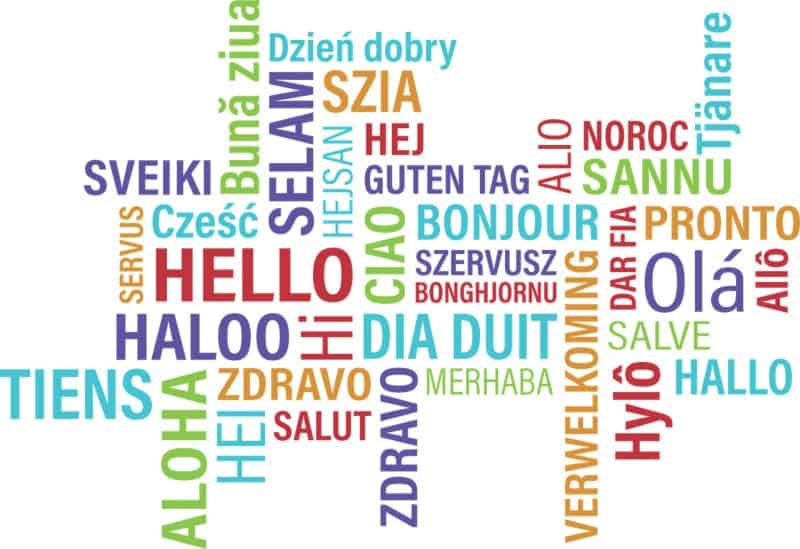
You had me at hello. A simple “hello” is the likely the first thing you will say to someone whether at home or while travelling abroad. It comes in different forms, different actions, different sounds, and different languages, but they all have the same intention and significance — to gain the attention and acknowledge the presence of another. Read on to find out exactly how to say hello in different languages around the world. I’ve got you covered, guys: Over 100 ways… It’s a bumper edition!
It all starts with that one “Hello!”
A word that breaks the ice, starts a conversation, generates a smile, and creates a memory.
One of the best things you can know as a traveller exploring the countries around the world is how to say “Hello” in the country you are visiting. It creates a good impression and conveys respect.
It’s friendly, it’s polite, and it’s simple.
Did you know that if you want to say hello in all languages to every person in the world, you would need to learn those words from 6,500 languages.
Ain’t nobody got time for that.
Fortunately just by reading this guide I have put together for you, you will be able to say hello in many languages to over 85% of the world’s population. How dope is that?
Add that to your CV 😉
Want to learn how to say GOOD MORNING, THANK YOU or GOODBYE too?
Read this guide to say good morning in different languages;
thank you in different languages;
how to say goodbye in every other language; and
cheers in different languages.
Did you know that the 21st of November is World Hello Day?
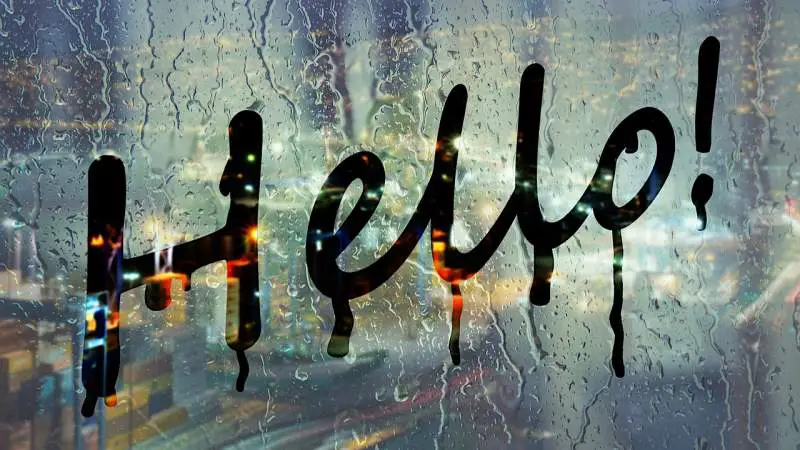
HELLO IN DIFFERENT LANGUAGES
Here’s your ultimate guide on how to say hello in 100 different languages around the world.
With pronunciation! In brackets you will find how to pronounce the word as it can often be difficult to know how to vocalise the word just by reading or looking at the direct translation.
Are you ready to take a trip and learn how to greet everyone around the world, travel lover?
I have included hi in every language I could think of. If I missed your language, let me know (in the comments) and I will be happy to add it.
Hello in different languages — Let’s go… Be sure NOT to miss the bonus at the end ↓↓
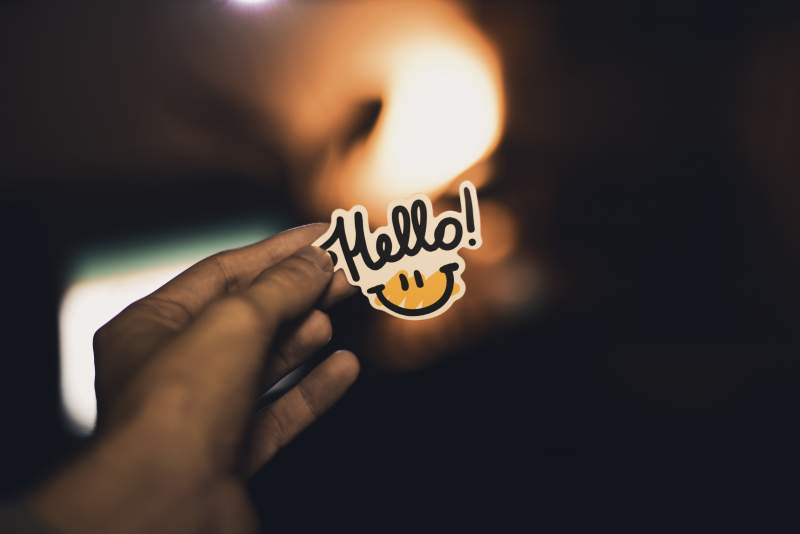
Read next: How to say ‘I love you’ in the most spoken languages in the world
Greetings in different languages —> Here is how you say hello in every language:
Afrikaans
- hallo (hal-low)
Afrikaans is a West Germanic language of southern Africa mostly derived from Dutch. It is mainly spoken in South Africa and Namibia by around 6 million people as their first language. It can also be heard in parts of Botswana and Zimbabwe.
Aklan
- hay (hi)
Aklan also known as Aklanon is an Austronesian language spoken by 460,000 Aklanon people in the province of Aklan on the tropical island of Panay in the Philippines.
Albanian
- përshëndetje (Per-shen-DEAT-ye)
- tungjatjeta (toon-jah-TYEH-tah) — formal hello
- tjeta (TYEH-tah) — informal hello
Albanian is an Indo-European language, spoken mainly in Albania and Kosovo, though it is also spoken in other areas of the Balkans. With about 7.5 million speakers, it comprises an independent branch within the Indo-European languages and is not closely related to any other language in Europe.
Aleut
- aang
Aleut or Unangam Tunuu is a member of the Eskimo-Aleut language family, spoken by the Aleut people living on the Alaskan Peninsula, and on the Commander, Aleutian, and Pribilof Islands. It is the only language in the Aleut branch of the Eskimo–Aleut language family.
Alsatian
- hallo
- salü
- güete tag
- buschur
Alsatian is a West Germanic language spoken by around 900,000 people, mainly in the Alsace region of northeastern France.
Altai
- Эзендер
Altai is a language belonging to the Turkic language family and is officially spoken in the Altai Republic of Russia.
Amharic
Hello in Amharic is:
- ጤና ይስጥል: Teanastëllën (teen-as-tell-an) — formal
- ታዲያስ: Tadiyas — informal
- ሰላም sälam — informal
- salamno (SalamnO) — male
- salamnish (SalamNISH) — female
Amharic is a Semitic language and the official language of Ethiopia. Hello not only means hello but also peace be with you. It can also be heard in Egypt and Eritrea, as well as in Israel, Sweden, Canada, and the United States.
Arabic
How do you say hello in Arabic:
- as-salām ‘alaykum (ahs-sahlahm ‘ah-leh-loom) السلام علیکم — formal hello
meaning peace be with you - This can be shortened to salaam سلام
- marhaba (mahr-hah-bah) مرحبا — informal hello
- ahlan (ah-lahn) — informal hello
Arabic (العربية) is a Semitic language spoken by over 420 million people as their first language in areas including North Africa, the Arabian Peninsula, and other parts of the Middle East. Many more people can also understand it as a second language. Modern Standard Arabic is the liturgical language for 1.6 billion Muslims and is the official written form of the language with the Arabic alphabet, which is written from right to left.
Aragonese
- ola
Aragonese is a language in the Romance language family that is native to Spain and spoken by just over 10,000 people in the Pyrenees valley of Aragon.
Aramaic
- shlama — meaning peace
- shlam’alokhon — peace be upon you
Aramaic ארמית is a member of the Semitic branch of the Afro-Asiatic language family that originated among the Arameans in the ancient region of Syria. It has a 3,000-year history and is still spoken by small groups of people in different parts of the Middle East.
Arapaho
- héébee — (man speaking)
- tous — (woman speaking or a man speaking to a woman)
Arapaho is one of the Plains Algonquian languages from the Algic language family, spoken by the Arapaho of Wyoming and Oklahoma.
Armenian
How to say hello in Armenian:
- barev dzez (bah-REV DZEZ) — formal way to say hello
- barev (bah-REV) — informal hello
Armenian is an Indo-European language spoken in the Republic of Armenia, as well as in large communities of Armenian diaspora by around 6.7 million people.
Assamese
- oi ঐ — informal hello
- nomoskar নমস্কাৰ — formal way to say hello
Assamese is an Indo-Aryan language spoken in the northeast Indian state of Assam, where it is an official language. Native to India and Bangladesh, it is spoken by over 23 million people.
Assyrian
- shlamaloukh — (m)
- shlamalakh — (f)
- shlamalokhoun — to a group of people
Assyrian, also known as Syrian or neo Aramaic is the East Semitic dialect that evolved from ancient Akkadian after 1950 B.C. As a Semitic language, it originated from the middle eastern region and is related to Arabic and Hebrew.
Asturian
- hola
Asturian is a West Iberian Romance language spoken by around 400,000 people in Asturias, Spain.
Australian
- hello
- g’day
- howdy
Australia has no official language, however Australian English is the variety of English spoken here.
Azerbaijani
- cалам سلام (sa-laam)
- salam əleyküm (sa-laam-mu-alaikum)
Azerbaijani or Azeri is the primary and official language of Azerbaijan by its 8.8 million native speakers. It is also widely spoken in Northern Iran and to a small extent in southern Dagestan, the Kvemo Kartli region of Georgia, eastern Turkey, in Shia cities of Iraq, like Karbala and Kirkuk. The language is a Turkic language and is highly intelligible with modern-day Turkish.
Balinese
- om suastiastu — this means peace and greetings from God
Balinese belongs to the Malayo-Polynesian language family and is spoken by around 3.3 million people on the Indonesian island of Bali as well as the regions of Nusa Penida, Lombok, Java, Sumatra, and Sulawesi.
Basque
- kaixo (kai-show) — hello
- egun on (egg-un own) — morning
- gau on (gow own) — night
Basque (euskara) is a language spoken in the Basque Country (Gipuzkoa, Araba, Bizkaia) and Navarra (in Spain) as well as in the French Basque Country (Labourd, Soule and Basse-Navarre). Linguistically, Basque is a language isolate and is unrelated to the other languages of Europe.
Bashkir
- сәләм (säläm)
Bashkir is an endangered language belonging to the Kipchak branch of the Turkic languages. Closely related to the Tatar and Kazakh languages, it is spoken by around 1.4 million native speakers in Russia, as well as in Ukraine, Kazakhstan, Belarus, Uzbekistan, and other neighboring post-Soviet regions.
Bavarian / Austrian German
- servus (SER-VOOS)
- seavus (SE-ah-VOOS)
- grüß Gott (gruess got) — formal
Bavarian is a regional dialect of German spoken in the German state of Bavaria, western Austria, and Northeastern Italy by over 14 million people. It uses German grammar, but takes several root words from Latin.
>> How to say hi in other languages ⇓
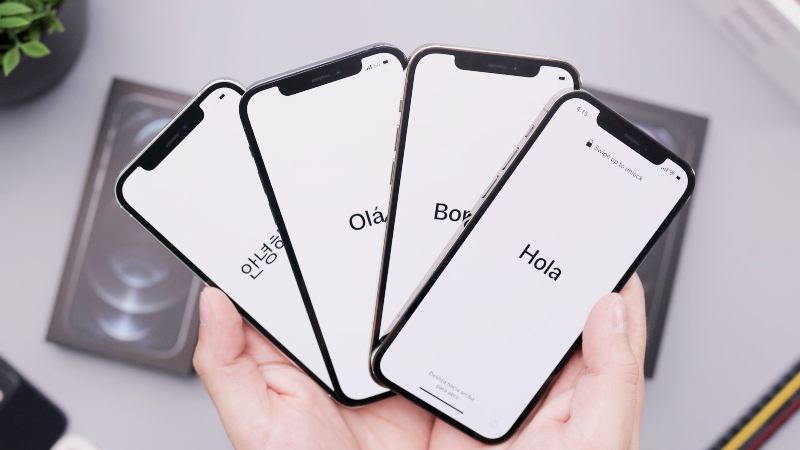
Belarusian
- biтаю (vee-tie-you)
Belarusian is the official language of Belarus. This East Slavic language is also spoken in Russia, Ukraine and Poland.
Bengali
- নমস্কার (nomoshkaar /namaskāra)
Bengali বাংলা is the only official language of Bangladesh, one of the 22 official languages of India, and the sixth most spoken language in the world. It is spoken as a first language by the majority of the population in Bangladesh, as well as people in the Indian state of West Bengal.
Berber
- azul
Berber, also known as the Amazigh languages, is a branch of the Afroasiatic language family that comprises of around forty closely related languages spoken by the Berbers. The Berber people are indigenous to North Africa, with the heaviest concentration found in Morocco. The major Berber languages include Tamazight, Tarifit, Tashelhit (Tashelhiyt, Tashelhait, Shilha), Kabyle, and Tamahaq.
Bhojpuri
- प्रणाम (prannam)
Bhojpuri is an Indo-Aryan Bihari language, considered to be one of the most rapidly growing languages in the world, spoken by over 40 million speakers in northern-eastern India and the Terai region of Nepal.
Bislama
- halo
Bislama is an English-based creole language and one of the official languages of the island of Vanuatu with around 10,000 native speakers.
Bodo
Say hello in Bodo:
- wai
- oi
- oye
Bodo बर’/बड़ is the Sino-Tibetan language spoken primarily by the Bodo people of Northeast India, Nepal, and Bengal. It is official language of the Bodoland Autonomous region and co-official language of the state of Assam in India.
Bosnian
- dobar dan (DOH-bahr dahn)
- zdravo (ZDRAH-voh) — informal
- merhaba (MEHR-hah bah) — informal
Bosnian, a south Slavic language of the Indo-European family, is the official language of Bosnia and is essentially the same language as Croatian and Serbian. All three languages used to be known as Serbo-Croatian before the break-up of Yugoslavia.
Brazilian Portuguese
- olá or oi
Brazilian Portuguese (Português do Brasil) is the variety of Portuguese dialect spoken in Brazil. It is spoken by virtually all of the 200 million inhabitants of Brazil and spoken widely across the Brazilian diaspora. European Portuguese differs from the Brazilian variety in pronunciation, as well as in some vocabulary.
Breton
- demat (de-mat)
Breton is a Southwestern Brittonic language of the Celtic language spoken in Brittany in the northwest of France.
Bulgarian
Say hello in Bulgarian:
- zdravei when speaking to one person — formal
- zdraveĭte Здравейте when speaking to a group of people — formal
- zdrasti Здрасти — informal greeting
Bulgarian is a South Slavic language spoken in Southeastern Europe, primarily in Bulgaria. It is the country’s only official language and Bulgarian is written with Cyrillic.
Burmese
In a different language hello in Burmese is:
- mingalarba (meen-gah LA-ba)
Burmese is a Sino-Tibetan language spoken in Myanmar where it is an official language and the language of the Bamar people, the country’s principal ethnic group.
Cambodian Khmer
- chum reap suor (jum reap sour) ជំរាបសួរ
- sous-dey — informal hi languages
Khmer is the language of the Khmer people and the official language of Cambodia. With over 16 million speakers, it is the second most widely spoken Austroasiatic language.
Catalan
- hola (OH-lah)
Catalan is a Western Romance language derived from Vulgar Latin and named after the medieval Principality of Catalonia, in northeastern of modern Spain. It is the only official language of Andorra, and a co-official language of the Spanish autonomous communities of Catalonia, the Balearic Islands, and Valencia.
Cebuano
- kumusta (koo-moos-tah)
Cebuano, also known as Bisaya or Binisaya, is an Austronesian language spoken in the southern Philippines region in Central Visayas, western parts of Eastern Visayas and the majority of Mindanao.
Chamorro
- hafa adai
- hafa dei
Chamorro is an Austronesian language, the native and spoken language of the Chamorro people, who are the indigenous people of the Mariana Islands.
Cheyenne
- haaahe — male
- héehe — female
There is no specific word for hello in the Cheyenne language, instead a hand gesture similar to calm down is used.
Cheyenne is the Native American language spoken by the Cheyenne people of the United States. It is part of the Algonquian language family. The Cheyenne are a Native American tribe that live in the Great Plains of Minnesota, Montana, Oklahoma, Colorado, Wyoming, and South Dakota.
Chichewa
- moni bambo to a male
- moni mayi to a female
- moni moni onse (mooni-mooni-on-se) is used as a general greeting hello to everyone.
Chichewa, also known as Nyanja, is a Bantu language spoken in much of the south, southeast, east and other parts of Africa. It is the national language of Malawi and is also spoken in Zambia, Mozambique, and Zimbabwe.
Chinese Cantonese
How to say hello in Cantonese:
- néih hóu 你好
Cantonese is a variety of Chinese originating from the city of Guangzhou and its surrounding area in Southeastern China. Belonging to the Sino-Tibetan family of languages, it is the traditional prestige variety of the Yue Chinese dialect group, which has about 68 million native speakers.
Chinese Mandarin
- The Chinese greeting is 你好 nǐ hǎo
你 means “you” and 好 means “good”
Mandarin Chinese is the official language of Mainland China and Taiwan, and is one of the official languages of Singapore. Mandarin is often placed first in lists of languages by number of native speakers with almost a billion speakers.
Cimbrian
- guuten takh
Cimbrian is a language of Germanic origin spoken by more than 2,000 people in Northern Italy. It is related to Bavarian and refers to any of several local Upper German varieties spoken in the region, with the speakers of the language referred to as Zimbern.
Cornish
- dydh da
Cornish is a Southwestern Brittonic language that forms part of the Celtic language family. It became an extinct language in Cornwall at the end of the 18th century and underwent a revival in the 20th century.
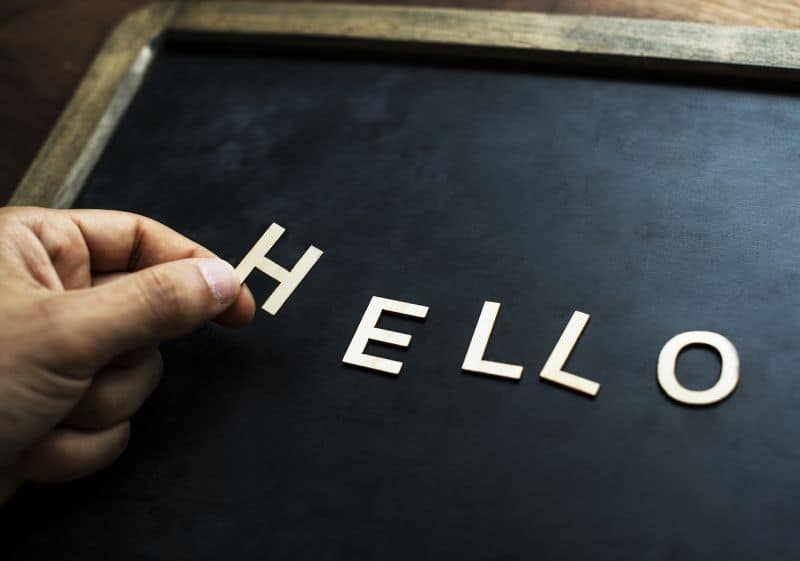
Corsican
- bonghjornu (bwohn JOHR-noh)
Corsican is a Romance language from the Italo-Dalmatian family that is spoken predominantly on the Mediterranean island of Corsica. Corsican is closely related to Tuscan and to the Florentine-based Italian.
Croatian
Learn how to say hello in Croatian:
- bok (bohk)
- dobar dan — good day
Croatian or Hrvatski is a South Slavic language spoken mainly in Croatia, Bosnia and Herzegovina, some parts of Serbia, and the neighbouring countries by about 5.5 million people.
Czech
- ahoj (ahoy) — casual hello
- dobrý den (DOH-bree dehn) — good day
Czech is a Western Slavic language which is mutually intelligible with Slovak. It is mainly spoken in the Czech Republic with over 10,5 million speakers.
Danish
- hej (hai) — casual hi
- hallo (ha-loh) — hello
Danish is a Scandinavian language and the only official language of the Kingdom of Denmark. It is spoken in Denmark and in some parts of Greenland and is closely related to Swedish and Norwegian.
Dhivehi
- assalaamu alaikum — meaning peace be to you
Dhivehi or Maldivian is an Indo-Aryan language spoken on the islands of Maldives where it is an official language.
Dogri
- ke aal aee
Dogri is a Northern Indo-Aryan language spoken by around five million people in India, mainly in the Jammu region of Jammu and Kashmir.
Dutch
- hallo (HAAL–oo)
- goedendag
- hoi — informal hi
Dutch is a West Germanic language spoken by about 27 million people world-wide mostly in the Netherlands and northern Belgium.
Dzongkha
How to say hello in Dzongkha:
- kuzu-zangpo la (koo-zoo-zang-poh-la)
Dzonkha or Bhutanese is the sole official and national language of the Kingdom of Bhutan. This Sino-Tibetan language is spoken by over half a million people in Bhutan and is written with the Tibetan alphabet.
Elfdalian
- häj ą̊ dig
- häj
- allo
Elfdalian also called Övdalian is a North Germanic Indo-European language spoken by up to 3,000 people in the Älvdalen region of Sweden.
English
- hello
English is a West Germanic language that was first spoken in Anglo-Saxon England in the early Middle Ages. It is spoken in many countries around the world with over 375 million native speakers. English is the second most spoken language, and the most international language in the world.
Estonian
- tere (TEHR-reh)
Estonian is a Finno-Ugric language spoken as the official language in Estonia. It is closely related to Finnish.
Faroese
- halló (hahloh)
- hey (huhy)
Faroese is a North Germanic language spoken as a first language by Faroe Islanders, residing on the Faroe Islands and in other areas, mainly Denmark.
Farsi / Persian
- سلام Salām
- درود بر تو Dorood bar to
- درود بر شما Dorood bar shoma
Persian is an ancient language belonging to the Iranian branch of the Indo-Iranian subdivision of the Indo-European languages. It is a pluricentric language predominantly spoken and used officially within Iran, Afghanistan, and Tajikistan.
Fijian
- bula (mbula)
Fijian is an Austronesian language of the Malayo-Polynesian family. It is an official language of Fiji spoken by some 350,000 – 450,000 ethnic Fijians as a native language.
Finnish
- hyvää päivää (HUU-vaa PAI-vaah) – good day
- hei (hay) — informal hey
- terve (TEHR-ve) — informal hello
- moi (Moy) — informal hey
Finns usually greet each other in an informal way, so you can use these greetings in 99% of all situations.
Finnish is a Finno-Ugric language spoken only in Finland as the official language and by ethnic Finns elsewhere in Scandinavia.
Flemish
- hallo (hah-low)
Flemish is a Low Franconian dialect cluster of the Dutch language, native to the historical region of Flanders in northern Belgium. It is sometimes referred to as Flemish Dutch, Belgian Dutch, or Southern Dutch spoken by over 6 million people.
French
How to say hello in French:
- bonjour — good day
Bon means “good” and Jour means “day”
Bonjour is flexible and can be used both formally and informally at anytime of the day. You can use it with anyone, from a friend or family member, to someone you’ve just met. - bonsoir — good evening
- salut (sah-LUU) is another way of saying hello in multiple languages.
Informal often used with close friends and family. - coucou — very informal. Fun greeting that should only be used with friends, family, and children.
- allô when answering the phone
French is a Romance language of the Indo-European family spoken by over 354 million people in France and around the world. It is the third most spoken language in Europe, the official language of 29 countries, spoken in parts of Africa, North America, and South America.
Frisian
Ways to say hello in different languages in Frisian is:
- goeie (GOO-ee)
The Frisian languages are a closely related group of Germanic languages, spoken by about 500,000 Frisian people, who live on the southern fringes of the North Sea in the Netherlands and Germany.
Friulian
- mandi
Friulian or Friulan is a Romance language of the Rhaeto-Romance family. It is spoken in the Friuli region of northeastern Italy with around 600,000 total speakers.
Fula
- a jaaraama
- sannu — informal
Fula, also referred to as Fulani or Fulah, is a Senegambian branch of the Niger-Congo language family spoken by more than 40 million people in Central and West Africa.
Galician
- ola
Galician is a Romance language spoken by around 2.4 million people in Galicia, a region in northwestern Spain, where it is the official language.
Georgian
- მიესალმები (miesalmebi)
- გამარჯობა (gah-mahr-joh-bah)
Georgian is the official language of Georgia and the country’s most widely spoken language with over 4.1 million people.
German
Translate hello into German:
- hallo — informal
- tag (tahg) — casual
- guten tag (goo-ten tahk) — formal good day
German Deutsch is the official language of both Germany and Austria and one of the three official languages of Switzerland. German belongs to the West Germanic group of the Indo-European language family. One of the major languages of the world, German is a native language to almost 100 million people worldwide and the most widely spoken native language in the European Union.
Gilbertese
- ko na mauri
- mauri — often shortened to this
Gilbertese, also called Kiribati, is an Austronesian Oceanic language spoken mainly in Kiribati, but also on the family islands of Fiji, the Solomon Islands, and Tuvalu.
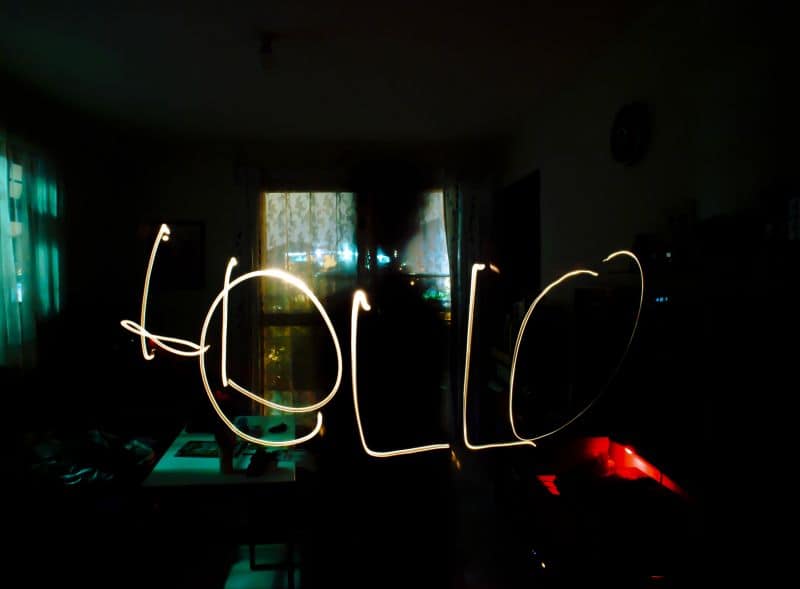
Greek
Hello in Greek:
- xαίρε (chai-ray) — hi
- yassas (YAH sahss) γεια σας — formal hello meaning, “health to you”
- yassou (YAH soo) γεια σου — informal hello
to be used when talking to a friend, partner or someone younger than you.
To be time-specific use:
- kalimera — good morning
- kalispera — good afternoon
- kalinita — good evening
Greek (ελληνικά) belongs to the Hellenic branch of the Indo-European language family, mainly spoken in Greece, the Greek islands, and Cyprus as an official language. It has the longest documented history of any living Indo-European language, spanning more than 3000 years of written records. There are about 13.1 million speakers of Greek worldwide and it is recognised as a minority language in Albania, Armenia, Hungary, Italy, Romania, Turkey, and Ukraine.
Greenlandic
- aluu — informal
- inuugujoq kutaa — formal
Greenlandic falls under the Eskimo–Aleut language family, spoken by around 57,000 Greenlandic Inuit people in Greenland.
Gujarati
- namaskaar
- namaste (nah-mah-steh)
- kem cho (kem-choh)
Gujarati is an Indo-Aryan language native to the Indian state of Gujarat and spoken predominantly by the Gujarati people. Gujarati is part of the greater Indo-European language family.
Haitian Creole
How to say hello in different languages – Haiti:
- alo — hello
- bonjou (BOH-joo) — formal hello
- sak pase (sak-pase) — informal what’s up
Haitian Creole (kreyòl ayisyen)) is a French-based creole language spoken by 10–12 million people worldwide and the only language of most Haitians. Along with French it is one of the official languages of Haiti.
Hausa
- sannu (san-NU)
Hausa language, the most important indigenous bridge language in West and Central Africa, spoken as a first or second language by about 40–50 million people. It belongs to the Western branch of the Chadic language family within the Afro-Asiatic language phylum. It is spoken mainly in northern Nigeria and Niger, and also in Benin, Burkina Faso, Cameroon, the Central African Republic (CAR), Chad, Congo, Eritrea, Germany, Ghana, Sudan, and Togo.
Hawaiian
How to say hello in Hawaiian:
- aloha
The Hawaiian language is a Polynesian language that takes its name from Hawaiʻi, the largest island in the tropical North Pacific archipelago where it developed. Hawaiian, along with English, is an official language of the State of Hawaii.
Hebrew
- שלום shalom (shah-LOHM)
- ma korae — informal greeting
Hebrew is a Northwest Semitic language spoken by over nine million people worldwide. Historically, it is regarded as the language of the Israelites and their ancestors. It is written using its own script from right to left.
Hindi
How to say hello in Hindi:
- namaste (Nah-mas-teh) नमस्ते
Saying hello in Hindi are not time-specific, so you can say this any time of the day or night to begin and end interactions with everyone from friends and strangers to elders and children.
Namaste is a greeting of respect and humility and comes from the Sanskrit words namah and te, which mean “bow” and “to you.” The greeting is paired with a slight bow of the head. Place both palms in front of the chest in a prayer-like position and as you say “namaste,” bow your head slightly.
There’s a strong spiritual element in the greeting. You’re not only acknowledging the presence of the other person, but also the divine that exists in everybody and the totality of humanity.
Hindi (हिन्दी) is an Indo-European language spoken in India, Nepal, and throughout the Indian diaspora. Hindi is descended from Sanskrit, sometimes called “the mother of all languages.” While there are 22 official languages and over 1,000 dialects of India, Hindi and English take precedence in government affairs. It is a link-language for over half of India’s population.
Hmong
- nyob zoo
Hmong is a Hmong-Mien language spoken by about 2.6 million people in China, Vietnam, Laos, Thailand, USA, and French Guiana.
Hopi
- ha’u (hah-uh)
- waynuma
Hopi is a Uto-Aztecan language spoken by the Hopi people in northeastern Arizona, USA.
Hungarian
How to say hello in Hungarian:
- jó napot (yoe naupote)
- szervusz (SEHR-voos)
- szia (SEE-ah) — informal hello
Hungarian is a Uralic language of the Ugric branch spoken in Hungary and parts of several neighbouring countries. It is the official language of Hungary and one of the 24 official languages of the European Union.
Icelandic
- halló (hal-law)
- góðan dag (gothan dahg)
- hæ (hai) — informal hi
- Sæll (Sight-l.) (to a man) — informal hello
- Sæl (Sigh-l.) (to a woman) — informal hello
Icelandic (íslenska) is a North Germanic language spoken in Iceland as its official language. It’s most closely related to Faroese and Western Norwegian and has around 314,000 speakers. The language is more conservative than most other Western European languages.
Igbo
- nnọọ
- ndewo
Igbo is the principal native language of the Igbo people of southeastern Nigeria with around 45 million speakers and over 20 dialects.
Indonesian Bahasa
- halo (HAH-loh)
- hai (high)
Indonesian (bahasa Indonesia) is the official language of Indonesia.With over 230 million speakers, it is one of the most widely spoken languages in the world. It is a group of varieties of Malay, an Austronesian language that has been used as the common language in the multilingual Indonesian archipelago for centuries. Indonesia uses the Latin alphabet system and Arabic numerals.
Inuktitut
- ᐊᐃᓐᖓᐃ (Ainngai)
Inuktitut is an Eskimo-Aleut language spoken in Arctic territories and the topmost span of North America including Alaska and Northern Canada.
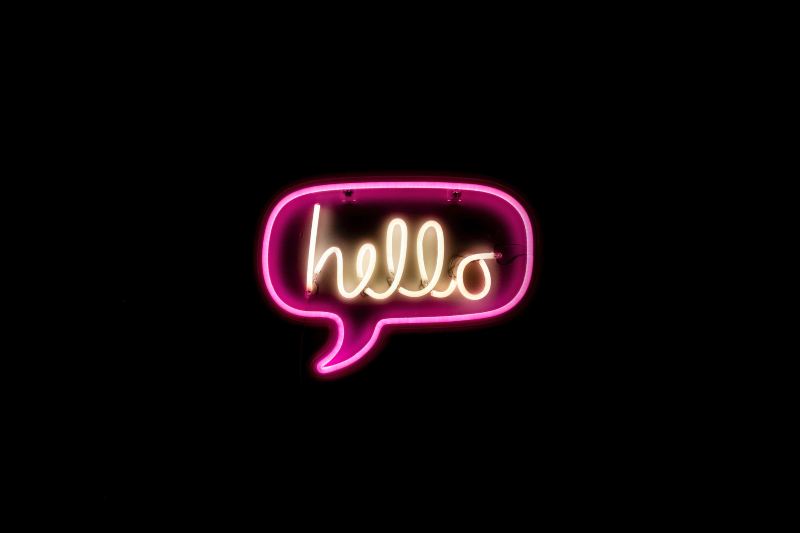
Irish
- dia dhuit (DEE-ah GHWIT)
Irish (Gaeilge) is one of the three Goidelic languages, along with Scottish Gaelic and Manx. This Goidelic branch together with the Brythonic branch (Welsh, Cornish and Breton) form the Celtic language family.
Italian
How to say hello in Italian:
- ciao (chow)
Ciao is informal and reserved only for close friends and for people you already know. - buon giorno (bwohn JOHR-noh) — good day/hello
Buon means “good” and giorno means “morning.” - salve (SAHL-veh) — formal hello
Italian does have three time-specific ways to formally greet others:
- buongiorno — in the morning
- buon pomeriggio — in the afternoon.
- buonasera — in the evening
- buena notte — good night
- pronto — when answering the phone in Italia.
Italian (Italiano) is a Romance language of the Indo-European language family spoken by over 90 million people, the vast majority of which are in Italy, Sicily, and Sardinia. Often considered to be the most beautiful language, it is the official language of Italy, San Marino, and the Vatican City.
Japanese
Say hello in Japanese:
- Kon’nichiwa (kohn-nee-chee-wah) こんにちは
Konnichiwa is widely-used to say “hello” in Japanese and cab be used at any time – day or night. It would be appropriate for both formal and informal settings.
To be time-specific, use:
- お早うございます (ohayō gozaimasu) in the morning
- 今日は (konnichiwa) in the afternoon
- 今晩は (konbanwa) in the evening.
Bowing, dating back to the 5th century, is a huge part of Japanese culture and is a sign of respect.
Japanese (日本語 Nihongo) is an East Asian language of the Japonic language family. It is spoken by about 125 million people, mostly in Japan, where it is the official and national language.
Jamaican
- whaa gwaan
- ello
Jamaican Patois, often also referred to as Jamaican Creole, is an English-based creole language with West African influences spoken mainly in Jamaica. Belonging to the English Creole language family, it is spoken by the the majority of Jamaicans with over 3 million native speakers.
Javanese
- halo
Javanese is the language of the Javanese people of the island of Java in Indonesia, where it is the native language of more than 98 million people.
Kannada
- namaskār ನಮಸ್ಕಾರ
Kannada, spoken by nearly 45 million native speakers, is a Dravidian language of the people of Karnataka in southwestern India, and by significant linguistic minorities in the states of Maharashtra, Andhra Pradesh, Tamil Nadu, Telangana, Kerala and abroad.
Kanuri
- ushé-ushé
Kanuri is language within the Saharan branch of the Nilo-Saharan language family spoken by approximately four million people in Nigeria, Niger, Chad, and Cameroon.
Karelian
- terveh
Karelian is a Finno-Ugric language of the Uralic language family, spoken in Karelia republic of northwestern Russia.
Kashubian
- witôj
- witôjtaż — hello all to more than one person
Kashubian is a member of the West Slavic group of Slavic languages with around 100,000 speakers in Poland.
Kazakh
- sälem (sah-lem) Сәлем — casual hello
- sälemetsiz be (sah-lem-met-siz beh) — formal hello
- assalamu aleikum (as-sa-laamu a-lay-kum)
When greeted first, the response should follow: wa aleikum ssselam
Kazakh is a Turkic language of the Kipchak branch spoken in Central Asia and the official language of Kazakhstan. The language comprises 21 million native speakers including regions of Bayan-Ulgii in Mongolia and the Dzungarian region of Xinjiang, China.
Kikuyu
- wĩmwega
Kikuyu or Gĩkũyũ is a Bantu language of the Niger-Congo language family that is spoken as a first language by over 6.6 million Agĩkũyũ people in Kenya.
Kinyarwanda
- muraho bite — informal
- uraho
Kinyarwanda, an official language of Rwanda, is a Bantu language of the Niger-Congo language family that is spoken by at least 10 million people in Rwanda, DR Congo, and Uganda.
Kirundi
- bwakeye
- amahoro (a-ma-ho-ro)
Kirundi, or Rundi, is a Bantu language of the Niger-Congo language family, spoken by over 9 million people in Burundi where it is the official language. It is also spoken in parts of Tanzania, the Democratic Republic of the Congo, and in Uganda.
Korean
Saying hello in Korean:
- 안녕하세요 Anyeong haseyo (AHN-young-ha-say-yo) — formal hello
- Anyoung (AHN-young) — informal greeting
Anyeong haseyo, roughly meaning “please be well,” is the standard Korean greeting for anybody – friends and elders alike. It can be used for any occasion at any time of the day.
Korean, an East Asian language, is the official language of South Korea (Republic of Korea) and North Korea (Democratic People’s Republic of Korea) spoken by more than 75 million people.
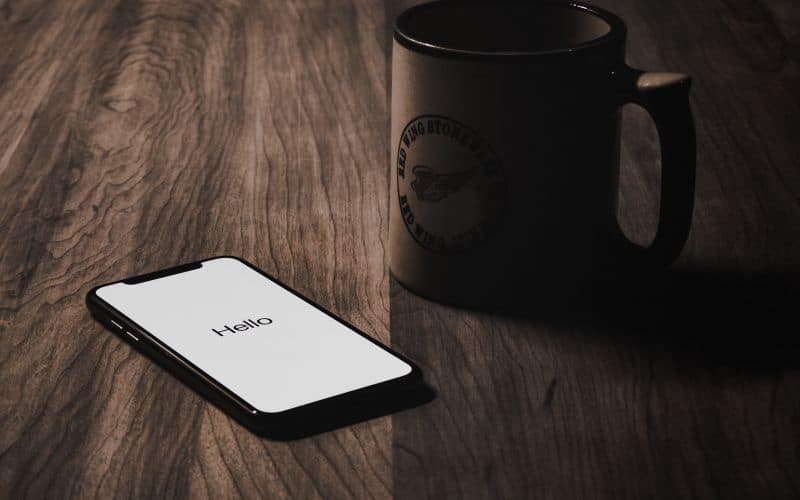
Kurdish
How to say hello in other languages such as Kurdish:
- silav (slaw)
- as-salaamu’ alaykum is also used
Kurdish is spoken by about 30 million Kurds in western Asia including parts of Kurdistan, Iraq, Turkey, Iran, and Syria. It is one of the Indo-Iranian languages, ranks as the third largest Iranian language, after Persian and Pashto.
Kyrgyz
- salamatsyzby (sah-lam-aht-seez-bee) — formal
- salam (sah-lam) — casual
Kyrgyz is a member of the Kipchak branch of the Turkic language family spoken by over 4 million speakers mainly in Kyrgyzstan, and also in China, Tajikistan, Afghanistan and Turkey.
Lao
- ສະບາຍດີ (sa-baai-di)
Lao is the main language of Laos. It is a Kra–Dai language serving as a common language among all citizens of Laos, who speak approximately 90 other languages, many of which are unrelated to Lao. Modern Lao is heavily influenced by the Thai language and comprises over 30 million native speakers.
Latin
Hello in Latin:
- salve (sal-way)
- salvete (sal-way-tay) is used when talking to more than one person.
Latin was the dominant language of the Roman Empire from 6th century BC to 600 AD. When the Roman Empire collapsed, Latin evolved into the various languages that we know today. Italian, French, Portuguese, Spanish and Romanian all consider Latin as their parent tongue. Latin is a classical language belonging to the Italic branch of the Indo-European languages.
That’s hello in 100 languages so far! Keep reading to discover even more ways…
Latvian
Say hello in Latvian:
- sveiki (SVYEH-kah) when speaking to a woman
- sveiks (SVEH-eeks) is used when speaking to a man.
Latvian (latviešu valoda) is an Indo-European Eastern Baltic language spoken in the Baltic region. It is the official language of Latvia and one of the official languages of the European Union.
Lebanese
- marHabā مَرْحَبا
Lebanese is a variety of North Levantine Arabic, indigenous to and spoken primarily in Lebanon. With significant linguistic influences borrowed from other Middle Eastern and European languages it is spoken by over 5,7 million native speakers.
Limburgish
- hallau
- hoi
- daag
Limburgish is a member of the East Low Franconian group of the Germanic languages considered a variety of German or Dutch by many people. It is spoken by around 1.6 million people in the Netherlands and Belgium.
Lingala
- mbote (mboh-teh) — hello
Lingala is a Bantu language spoken throughout the northwestern part of the Democratic Republic of the Congo and a large part of the Republic of the Congo by over 70 million people.
Lithuanian
Hello in Lithuanian:
- sveiki (SVEH-kii) is used when speaking to a man
- sveika (SVYEH-kah) when speaking to a woman
- laba diena — good day
Lithuanian (lietuvių kalba) is an Eastern Baltic language spoken in the Baltic region as the official language of Lithuania. It is also one of the official languages of the European Union spoken by just under 3 million native speakers. The language is one of the oldest in the world.
Luxembourgish
- Hello in Luxembourgish: moïen (MOY-en)
Luxembourgish is a West Germanic language that is spoken mainly in Luxembourg. About 390,000 people speak Luxembourgish worldwide.
Luganda
- ki kati (chi kati) — informal hi languages
- oli otya to one person
- muli mutya to a group
Luganda, a Bantu language,is an official language of Uganda along with English and Swahili. It is spoken primarily in Kampala, but may be understood in much of the country and in the African Great Lakes region.
Macedonian
- Здраво zdravo — hello
- Добар ден dobar den — good day
Macedonian, the official language of the Republic of North Macedonia, is a south Slavic language spoken as a first language by 2 million people.
Malagasy
- salama(sah-lAHm-ah) — hello
- manao ahoana (man-ow ah-ohn-ah) — how is it
Malagasy is the national language of Madagascar belonging to the Austronesian Malayo-Polynesia family of languages spoken by 25 million people.
Malay
- hello (he-loh) — hello
- hai (hai) — casual hello
- selamat tengahari (suh-lah-mat teng-a-haari) — good afternoon
- selamat pagi (suh-lah-mat puh-guee) — good morning
Malay (Bahasa Melayu) is an Austronesian language spoken as the sole official language of Malaysia and Brunei. It is also heard in Indonesia, Singapore, and Thailand at a total of 250 – 300 million speakers.
Malayalam
Hello in other language Malayalam is:
- halēā
- namaskkaram (nah-mah-skahr-ahm)
Malayalam (മലയാളം) belongs to the Dravidian language family, spoken mostly in the Southern Indian states of Kerala and Lakshadweep. Around 36 million people use this language, which is one of the 22 official languages of India.
Maltese
Say hello in Maltese:
- bongu (Ħelow)
Maltese, a language of central Semitic origin written in the Latin script, is the national language of Malta. It is spoken by around 420,000 people on the Mediterranean islands of Malta, Gozo, and Comino. The Maltese language developed from Sicilian Arabic. Over the centuries, it has incorporated many words derived from English, Italian, and French.
Mandinka
- salaam aleekum
Mandink, also called Mandingo, is a member of the Manding branch of the Niger-Congo language family. It is the official language of Senegal and is also spoken by the Mandinka people of Guinea-Bissau, Sierra Leone, Mali, Gambia, Guinea, Côte d’Ivoire, Burkina Faso, Liberia, and Chad.
Māori
- kia ora — casual
- tēnā koe (teh-nah koy) — when saying hello to one person
Māori is an Eastern Polynesian language spoken by the Māori people, the indigenous population of New Zealand. it has also gained recognition as one of New Zealand’s official languages.
Marathi
- namaskār नमस्कार
Marathi is an Indo-Aryan language spoken by around 83.1 million Marathi people of Maharashtra, India. It is the official language and co-official language in the Maharashtra and Goa states of Western India, respectively, and is one of the 22 scheduled languages of India.
Marshallese
- yokwe (YAW-kweh) — hello
Marshallese, also known as Ebon, is a Micronesian language spoken in the Marshall Islands by about 44,000 people. It is an official language of the Marshall Islands, along with English, and is used as the language of instruction in most primary schools.
>> Do you know how to say hello in 100 languages?

Mauritian Creole
- bonzour (bon-zoor)
- allo (ah-low) — informal hi
Mauritian Creole or Morisien, the de facto language of Mauritius, is a French-based creole language that is closely related to the Rodriguan, Seychellois, and Chagossian Creoles.
Mongolian
How to say hello in Mongolian:
- sain baina uu (sain bai-na OO) — formal
- sain uu (say-noo) — casual
Mongolian is the official language of Mongolia and both the most widely-spoken and best-known member of the Mongolic language family. It is an Altaic language spoken by approximately 5 million people in Mongolia, China, Afghanistan, and Russia.
Montenegrin
- ćao (ciao)
- zdravo (zdrah-voh)
Montenegrin, the official language of Montenegro, is a South Slavic language spoken by almost 250,000 people in the country.
Moroccan Arabic
- اسلا عليكم (ssalamū ‘lekum)
- الو (alu)
Moroccan Arabic, also known as Darija, is a form of vernacular Arabic spoken in Morocco. It is part of the Maghrebi Arabic dialect continuum, with over 30 million native speakers.
Nahuatl
- pialli (pee-ahh-lee)
Nahuatl is a group of languages of the Uto-Aztecan language family. It was the language of the Aztecs and the Toltecs. Variations of Nahuatl are spoken by around 1.7 million Nahua people of Central Mexico and the USA and Nahuatl remains the most widely-spoken group of Native American languages in North America.
Nauruan
- ekamowir omo
Nauruan is an Austronesian language, spoken natively on the island country of Nauru by around 6,000 people.
Navajo
- yá’át’ééh
Navajo is an American Indian language of the Athabascan family, spoken by around 170,000 Navajo people in the Southwestern United States regions of Arizona, New Mexico, Utah, and Colorado.
Ndebele
- salibonani
Ndebele, an African language of the Nguni group of Bantu languages, is spoken by around 5 million Northern Ndebele people of Zimbabwe.
Nepali
- namaste (nah-mahs-teh) नमस्ते
Nepali (नेपाली), is an Indo-Aryan language of the sub-branch of Eastern Pahari written in Devanagari script It is the sole official language of Nepal and one of the 22 scheduled languages of India. While most Nepalese people speak at least some Nepali, there are more than 100 different languages and dialects spoken in Nepal.
Neapolitan
Hello in another language Neapolitan:
- cia
- cha
Neapolitan is a Romance language of the Italo-Dalmatian group spoken across much of southern Italy by 6 million people. It is related to but generally not mutually intelligible with Italian.
Nkore
- oraire ota
- osiibire ota
Nkore or Runyankore is a Bantu language of the Niger-Congo language family spoken by approximately 2.3 million Nkore people of south-western Uganda.
Northern Sotho
- dumela (doo-MAY-lah) when addressing a single person.
- dumelang (doo-MAY-lang) when speaking to more than one person
- khotso (coat-so) — casual hello
Northern Sotho, or Sepedi, is a Bantu language spoken primarily in South Africa, where it is one of the 11 official languages. It is spoken by about 4.2 million people in the South African provinces of Gauteng, Limpopo, and Mpumalanga.
Norwegian
Say hello in Norwegian:
- hei (hay) — informal hi
- Hallo — formal hello
- god dag (goo dahg) — good day
- halla — the slag version if you want to chill with the cool kids
Norwegian (norsk) is a Germanic language derived from Old Norse spoken primarily in Norway by over 5 million people where it is the official language.
Odia
- ନମସ୍କାର namaskār
Odia is an Indo-Aryan language spoken in the Indian state of Odisha where it is the official language.
Oromo
- akkam
Oromo is a Cushitic language spoken by about 30 million people in Ethiopia, Kenya, Somalia and Egypt. It is the third largest language in Africa.
Palauan
- alii (ah-LEE)
Palauan is a Malayo-Polynesian language spoken by almost 20,000 people in the Republic of Palau, where it is one of the two official languages, alongside English. It is also heard in Guam and Northern Mariana Islands.
Papiamento
- konta
- kumbai
Papiamento is a Portuguese-based creole language spoken in the Dutch Caribbean by less than 500,00 native speakers. It is the most-widely spoken language on the Caribbean ABC islands, having official status in Aruba, Bonaire, and Curaçao.
Pashto
Hello in Pashto:
- سلام salam
- khe chare (KHEH chah-reh) — casual hello
Pashto is an Eastern Iranian language in the Indo-European family spoken in Afghanistan, Pakistan and Iran. It is an official language of Afghanistan along with Dari.
Polish
Ways to say hello in Polish:
- dzień dobry (jeyn dob-ry) — good morning
- cześć (cheshch) — informal hello
- siema — used only by young people to say hi
- hej — casual hey in different languages
Polish (polski) is a West Slavic language spoken by about 45 million people. Said to be one of the hardest languages to learn, it is the official language of Poland. It is understood and can be used for communication in the western parts of Ukraine, Belarus, and Lithuania.
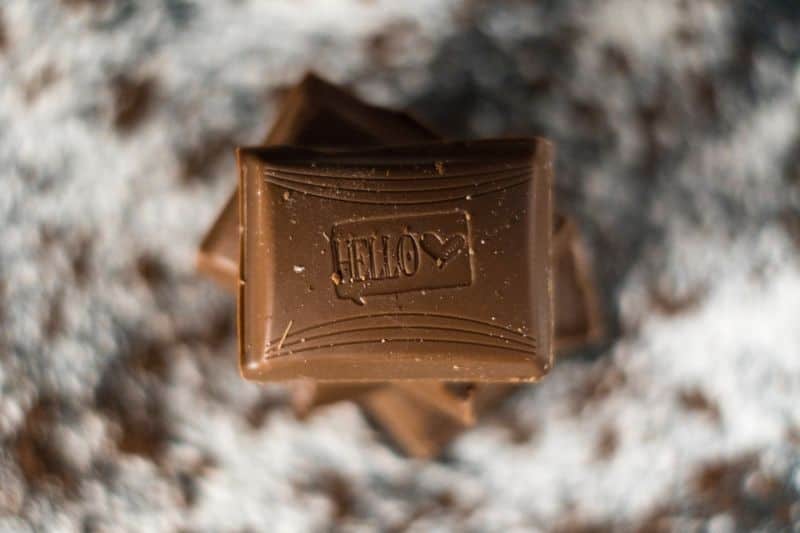
Portugese
Here is how you say hello in Portuguese:
- olá (oh-LAH) — formal hello
- oi — casual hi
- bom dia — good day
Portuguese (português) is a Romance language spoken as the official language of Portugal and Brazil. It is also the official language of Cape Verde, Guinea-Bissau, São Tomé e Príncipe, Angola, Mozambique, and the co-official language of East Timor, and Macau. There are around 200 million native Portuguese speakers.
Punjabi
- sata sri akaal (saht sree ah-kahl) ਸਤ ਸ੍ਰੀ ਅਕਾਲ — Sikh formal hello
- as-alam-walaykum (ah-sah-lahm-wah-lay-koom) — Muslim formal hello
Punjabi is an Indo-Aryan language with more than 130 million native speakers in the Indian subcontinent and around the world. It is the 10th most spoken language in the world.
Romanian
How to say hello in Romanian:
- bună (BOO-nuh) — casual hello
- salut (sah-LOOT) — formal hello
Romanian (limba română) is a Balkan Romance language spoken by approximately 24–26 million people as a native language, primarily in Romania and Moldova, and by another 4 million people as a second language. It is an official and national language of both Romania and Moldova.
Romansh
- ciao
- allegra
Romansh is a Romance language spoken predominantly in the Swiss canton of the Grisons and Graubünden. Romansh, recognized as an official language of Switzerland, is considered an endangered language.
Russian
Hello in Russian:
- zdravstvuyte (ZDRA-stvooy-tyeh) здравствуйте — your go-to Russian greeting in any situation which translates to “be healthy, be well”
- zdorovo (zduh-ROH-vuh) — hello (informal)
- привет privet (pree-VYEHT) — informal hey/hi
- Алло allo is a Russian hello when answering the telephone
Russian is an East Slavic language spoken by 300+ million people world-wide. It is an official language in the Russian Federation, Belarus, Kazakhstan, and Kyrgyzstan, while many other people in Central Asia, the Baltic states, the Caucasus, and Eastern Europe know it as a second language.
Samoan
- talofa (tah-low-fah)
Samoan is the official language spoken in the Samoan Islands, which is made up of the Independent State of Samoa and the American Samoa. The language is the most spoken of the Polynesian language family with a total of 510,000 speakers worldwide.
Sanskrit
How to say hello in languages of Sanskrit:
- namaste
namah translates as “salutations” while te means “to you.” Namaste is a way of saying “salutations to you” to honor the light of universal awareness that lives within each of us.
Sanskrit is a 4,000-year-old classical language that belongs to the Indo-Aryan branch of the Indo-European languages. Known as ‘the mother of all languages,’ Sanskrit is the root of many, but not all, Indian languages. It is also the liturgical language of Buddhism, Hinduism, and Jainism. Sanskrit has less than 15,000 native speakers at present and is mostly used by Hindu priests during religious ceremonies.
Sardinian
- bone die
- saludi
Sardinian or Sard is a Romance language spoken by over 1.5 million inhabitants of the Mediterranean island of Sardinia in Italy.
Scottish Gaelic
- haló (ha-LAW)
Scots Gaelic is a Goidelic language of the Celtic and Indo-European language family, native to the Gaels of Scotland. As a Goidelic language, Scottish Gaelic, like Modern Irish and Manx, developed out of Middle Irish.
Serbian
- zdravo (ZDRAH-voh) Здраво
- ćao (chow) — informal way to say hello
Serbian is a South Slavic language spoken mainly in Serbia, Bosnia and Herzegovina, Montenegro, Croatia and Macedonia by about 9 million people. Serbian is the official and main language of Serbia and Montenegro.
Sesotho
- dumela (doo-meh-lah) when speaking to one person
- dumelang (doo-meh-lang) when speaking to more than one, meaning hello to all
Sesotho (Sotho) is a Southern Bantu language of the Sotho-Tswana group, spoken primarily by the Basotho in Lesotho, where it is the national and official language, South Africa, where it is one of the 11 official languages and in Zimbabwe where it is one of 16 official languages.
Seychellois Creole
- allo
Seychellois Creole, or Seselwa, is a French-based creole language of the Seychelles where it is one of the official languages.
Shanghainese
- noŋ hɔ 侬好
Shanghainese, part of the Sino-Tibetan language family, is a variety of Wu Chinese spoken in the central districts of the City of Shanghai and its surrounding areas by 10 – 14 million speakers.
Shona
- mhoro
Shona, one of the most widely spoken Bantu languages, is the main language in Zimbabwe.
Sicilian
- ciao
Sicilian is a Romance language spoken by more than 4 million speakers on the island of Sicily in Italy.
Sindhi
- assalamu alaikum هيلو
Sindhi, an Indo-Aryan language, is the official language of the Pakistani province of Sindh and spoken by over 25 million Sindhi people.
Sinhala
- āyubōvan (ah-yuh-boh-van) — formal hello
- halō (ha-loh) — casual hello
Sinhala is an Indo-Aryan language spoken by approximately 16 million Sinhalese people in Sri Lanka and is one of two official languages of Sri Lanka.
Slovak
- ahoj (AH-hoy) — informal
- dobrý deň (dOH-bree deñ) — formal greeting
Slovak, the official language of Slovakia, is a West Slavic language where it is spoken by approximately 5.6 million people.
Slovenian
- zdravo (ZDRAH-voh)
- živjo (ZHEE-vyoh)
Slovenian, an Indo-European language of the South Slavic language branch is the official and national language of Slovenia spoken by less than 3 million people.
Somali
- salaam alaykum
Somali, an Afro-Asiatic language spoken by over 16 million people, is an official language of Somalia, a national language in Djibouti, and a working language in the Somali Region of Ethiopia.
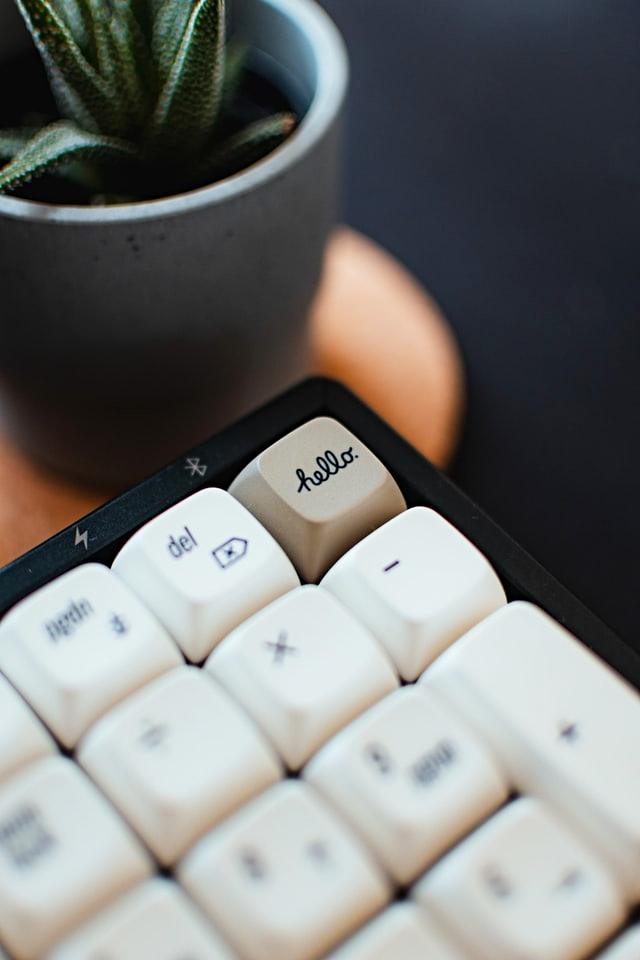
Spanish
Learn how to say hi in Spanish:
- ¡hola! (O-laa)
You can use hola in both formal and informal settings, at any time of day or night.
To be time-specific, you can use:
- buenos dias — good morning
- buenas tardes — good afternoon
- buenas noches — good night
Spanish is the second most widely used language in the world natively spoken by more than 437 million people including Spain, the Spanish islands, most of Central and South America, Mexico, and the USA. There are over 21 countries in the world that have Spanish as their official language, with Mexico being the largest Spanish speaking nation. It is a Romance language that originated in the Iberian Peninsula.
Sundanese
- halo — informal hey
- sampurasun — formal greeting
Sundanese is a Malayo-Polynesian language spoken by about 39 million people mainly in western Java in Indonesia. There are also speakers in Banten, Jakarta, parts of western Central Java and southern Lampung. It is the third most-spoken language in Indonesia.
Swabian German
- grüss gott
Swabian, a Germanic language closely related to German, Bavarian, and Dutch, is spoken by over 800,000 people, mainly in the Swabia region of southwestern Germany, as well as in parts of Hungary and Romania.
Swahili
- jambo
- hujambo
- habari gani — what is the news?
Swahili is a Bantu languages spoken by the Swahili communities in Kenya, Tanzania, Uganda, Rwanda, Burundi, Mozambique, and the Democratic Republic of Congo.
Swati
- sawubona (sah-woo-boh-nah) — hello
Swati is a Bantu language of the Nguni group spoken in Eswatini and South Africa by the Swazi people. The number of speakers is estimated to be in the region of 12 million.
Swedish
- hej
- hallå
Swedish is a North Germanic language, closely related to Norwegian and Danish spoken by over 9 million people. It is the national language of Sweden and the official language of the Åland Islands.
Swiss German
- hoi — informal hey
- grüezi — formal singular
- grüezi mitenand — formal plural hello all languages
Swiss German is the collective name for the great variety of Upper German dialects spoken in Switzerland, Liechtenstein, in the Austrian province of Vorarlberg, in parts of Baden-Württemberg in Germany and Alsace in France.
Tagalog Filipino
- kumusta (koo-moos-tah) — hello
Kamusta really means “how are you?” but people use it as a form of “hello.” - helów (hey-LOW) — informal hello
Tagalog is an Austronesian language spoken as a first language by a quarter of the population of the Philippines and as a second language by the majority. Its standardized form, officially named Filipino, is the national language of the Philippines, and is one of two official languages alongside English.
Tahitian
- Ia ora na (ee-ah oh-rah-na)
Tahitian belongs to the Eastern Polynesian language group, spoken mainly on the Society Islands in French Polynesia and Bora Bora.
Taiwanese Hokkien
- Hello in Taiwanese is lí-hó (lee-hoh)
Taiwanese Hokkien is the Hokkien dialect of Min Nan as spoken by about 70 percent of the population of Taiwan.
Tajik
Hello in Tajik:
- cалом (sah-lohm) — casual hello
- ассалом (a-sah-lohm) — casual hello
- ассалому алейкум (asah-lomu ah-lay-koom)
Tajik is the main language of Tajikistan, closely related to Farsi and Kurdish. Since the late 1930s, it is written using a variant of the Cyrillic script.
Tamil
- vanakkam வணக்கம் (Vaa–NaK–Kam)
Tamil is a Dravidian language spoken in southern India, Sri Lanka and Singapore by about 67.5 million people.
Tarifit
- Hello in Tarifit is azul, which means “peace”
- ola
Tarifit is spoken by 8 million speakers in Arrif (Northern Africa) and Europe.
Tatar
- isänmesez (ees-aen-meh-sehz)
- sawmısız (saw-mis-siz) — hello
- sälam (sae-lahm) — casual hello
Tatar (татарча), the national language of the Tatars, is a Turkic language spoken mainly in the Russian republic of Tatarstan as well as Siberia by about 7 million people.
Telugu
- namaskāram నమస్కారం
Telugu is a Dravidian language spoken in the Indian states of Andhra Pradesh, Telangana and the union territories of Puducherry by 75 million Telugu people.
Tetum
- elo
Tetum is an official language of Timor-Leste belonging to the Austronesian language family and spoken by just under 400,000 people.
Thai
- sawasdee krap (sa-wat-dii-krap) สวัสดี ครับ/ค่ะ — hello as a male
- sawasdee ka (sa-wat-dii-kha) สวัสดี ครับ/ค่ะ — hello as a female
Thai ภาษาไทย, the sole official and national language of Thailand, spoken by 50 million people, belongs to the Tai group of the Kra–Dai language family of Southeast Asia.
Tibetan
- tashi delek (tah-shee del-ek) — hello in the Lhasa dialect of Tibetan
- cho demo — hello in the Amdo dialect of Tibetan
Tibetan is an official language of the Tibet Autonomous Region of the People’s Republic of China. The Tibetic languages are a cluster of Tibeto-Burman languages descended from Old Tibetan, spoken across a wide area of eastern Central Asia bordering the Indian subcontinent, including the Tibetan Plateau and the Himalayas.
Tigrinya
- ሰላም ሃለው (selam halewi)
- ቻው (chawi)
- ከመይ ዊዕልኩም (kemeyi wī‘ilikumi)
Tigrinya is a Semitic language commonly spoken by around 9.85 million people in Eritrea and in the Tigray Region of Ethiopia.
Tok Pisin
- hai
- gude
Tok Pisin, more commonly known as New Guinea Pidgin, is a creole language spoken throughout Papua New Guinea, where it is an official language. It is the most widely used language in the country, spoken by around 120,000 people.
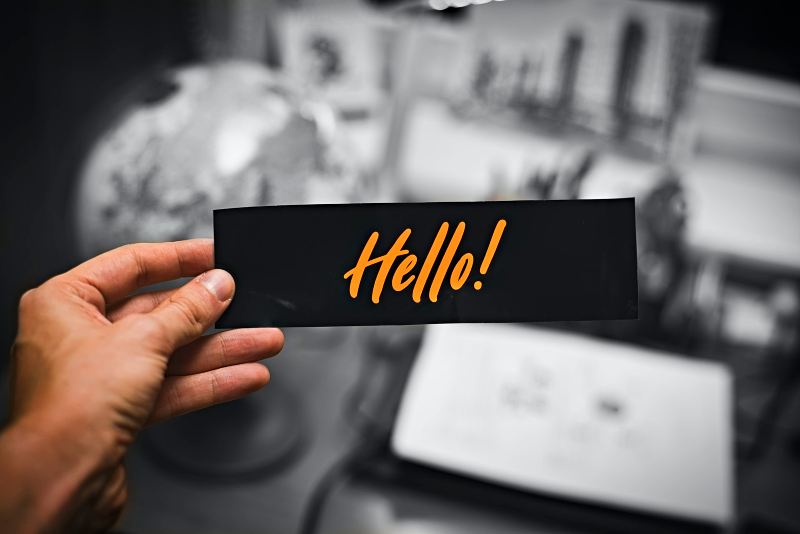
Tongan
- mālō e lelei — informal
- mālō ‘etau lava
Tongan is an Austronesian language of the Polynesian branch mainly spoken in Tonga, where it is the official language.
Tsalagi Cherokee
- osiyo
Osiyo means more than just hello to Cherokees. It’s a deeper spirit of welcoming and hospitality that has been a hallmark of the Cherokee people for centuries.
Cherokee (Tsalagi) belongs to the Iroquoian language family. The Cherokee language is unique among Native American languages in that it is both a written and spoken language.
Tshivenda
- ndaa — as a male
- aa — as a female
Tshivenda or Venda is a Bantu language spoken by the Venda people of South Africa where it is an official language.
Tsonga
- minjhani when saying hello to adults
- kunjhani when greeting your friends or children
Tsonga is a Bantu language spoken by the Tsonga people totalling 12 million people mainly in South Africa, but also Mozambique and Eswatini.
Tswana
- dumela (doo-meh-lah)
Tswana is a Bantu language spoken by about 4.4 million people in Bostwana, where it is the national and majority language, Namibia, Zimbabwe and South Africa. The majority of speakers, about 3.6 million, live in South Africa, where the language is officially recognised.
Turkish
- merhaba (mehr hah bah)
- selam (sell um) — informal hi language
Turkish is a Turkic language believed to be of the Altaic language family spoken mainly in Turkey, Northern Cyprus, Cyprus and other countries of the former Ottoman Empire by about 88 million people.
Turkmen
- salam
- salawmaleýkim
Turkmen belongs to the Turkic language family and is spoken by around 11 million Turkmen people of Central Asia, mainly in Turkmenistan, Afghanistan, and Iran.
Tuvaluan
- tālofa
Tuvaluan is a Polynesian language that is native to Tuvalu, Fiji, Kiribati, and Nauru.
Twi
- agoo
Twi, or Akan kasa, is a dialect of the Akan Niger-Congo language family spoken by the Akan people in southern and central Ghana.
Ukrainian
Hello in Ukrainian is:
- dobriy den (DOH-brihy dehn)
- vitayu (vee-TAH-yoo) — formal hello
- pryvit (prih-VEET) — informal hello
Ukrainian is an Eastern Slavic language spoken mainly in Ukraine by about 51 million people.
Urdu
- assalam u Alaikum السلام علیکم meaning “peace be on you.”
It’s used when people meet at any time of the day – morning, noon, or night.
Urdu is the official national language and lingua franca of Pakistan. It is a member of the Indo-Aryan group within the Indo-European family of languages and is mutually intelligible with Hindi.
Uyghur
- yahshimusiz (yok-shee-moose-siz)
Uyghur is a Turkic language of the Karluk branch written in a Uyghur Perso-Arabic script. It is spoken primarily by 10 million Uyghur people in the Xinjiang Uyghur Autonomous Region of China.
Uzbek
- hello in Uzbek is assalomu alaykum
- salom — an informal way to say hi languages
Uzbek is a Turkic language that is the official national language of Uzbekistan spoken by around 27 million people.
Vietnamese
How to say hello in Vietnamese:
- xin chào (sin CHOW)
- chào bạn — casual
Vietnamese is an Austroasiatic language spoken mainly in Vietnam, where it is the national and official language, by about 82 million people.
Welsh
How to say hello in Welsh:
- Helo
- shwmae (shoe-my) — casual
- sut mae (sit my) — casual
Welsh is a Brittonic language of the Celtic language family spoken natively in Wales, and by some in England.
Woiworung
- womenjeka (woh-men-je-kah)
Woiworung is an Australian Aboriginal language of the Kulin Nation of Central Victoria.
Wolof
- salaam alaikum (sa-laam a-lay-kum)
Wolof is a national language of Senegal, where it is spoken by approximately 5.4 million people as a first language. It belongs to the Atlantic group of the Niger-Congo language family and is the native language of the Wolof people.
Xhosa
- molo
Xhosa is a Nguni Bantu language with click consonants and is one of the official languages of South Africa. It is spoken as a first language by approximately 8.2 million people and by another 11 million as a second language in South Africa, mostly in Eastern Cape Province.
Yiddish
- a gutn tog (a goo-ten tawg) — good day / hello
- sholem-aleykhem (shoh-lem ah-leh-khem) — hello greetings in different languages
- aleykhem-sholem (ah-leh-khem shoh-lem) — hello response
Yiddish is the historical language of the Ashkenazi Jews originating during the 9th century in Central Europe. Belonging to the Indo-European language family, it is spoken by 1.5 million people.
Yoruba
- bawo ni
Yoruba is a pluricentric language spoken in West Africa with the number of speakers estimated between 30 and 40 million. It is a language spoken principally in Nigeria and Benin, with communities in Sierra Leone, Liberia, other parts of Africa.
Zulu
Say hello in Zulu:
- sawubona (sah-woo-boh-nah)
Zulu is a member of the Bantu/Nguni family of languages. It is one of the official languages of South Africa spoken by about 10 million people mainly in Zululand and northern Natal in South Africa and also other places in Africa such as Botswana, Lesotho, Malawi, Mozambique, and Eswatini.
Do you now know how to say hello in every language? Here are some final ways on how to say hi in different languages…
Hello in Different Languages — BONUS
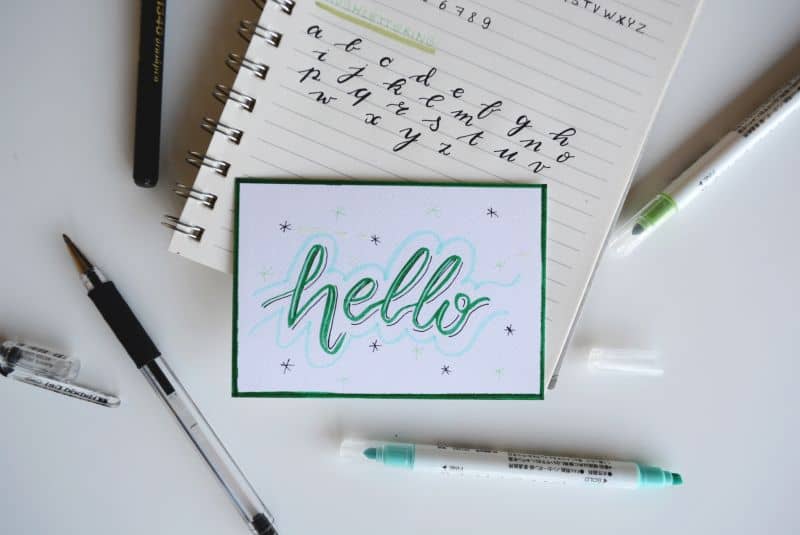
American Sign Language (ASL)
How to say hello in American Sign Language:
- squeeze the fingers in your right hand together, touch the tips of your fingers to your forehead, palm facing outward, and move your hand away from your forehead in a saluting motion.
American Sign Language is a complete, natural language that has the same linguistic properties as spoken languages, with grammar that differs from English, expressed by movements of the hands and face.
British Sign Language (BSL)
How to say hello in British Sign Language:
- dominant hand wave, from inside to out with the palm facing towards recipient. As the hand moves bring it into a thumbs up gesture — formal hello
- give two thumbs up — informal
British Sign Language is a sign language used in the United Kingdom as the first or preferred language of some deaf people. The language makes use of space and involves movement of the hands, body, face, and head.
Dothraki
- m’athchomaroon
- this can be shortened to m’ath and m’ach
Dothraki is a constructed fictional language spoken by the Dothraki, a nomadic people in the fictional world of George Martin’s fantasy novel series A Song of Ice and Fire and its television adaptation the Game of Thrones.
Elvish Sindarin
- aiya
- mae g’ovannen
Elvish Sindarin is one of the fictional languages created by J.R.R. Tolkien for use in his fantasy stories set in Arda, primarily in Middle-earth. Sindarin is one of the many languages spoken by the Elves, called the Eledhrim or Edhellim in Sindarin.
Espetanto
- saluton
Esperanto is an artificially constructed language and belongs to no linguistic family, with most of its vocabulary coming from the Romance languages. This phonetic language is the most widely spoken constructed international auxiliary language.
Klingon
- Say hello in Klingon: nuqneH (nook-neck)
Klingon is a language that was made for the Klingons in the Star Trek movie. It is a constructed language, and not one that developed naturally. Only a few people can speak the Klingon language well enough to talk in it.
Lojban
- coi
Lojban is a carefully constructed spoken language created by the Logical Language Group in 1987. Lojban is proposed as a speakable language for communication between people of different language backgrounds. With its 1350 root words that can be easily combined to form a vocabulary of millions of words, it is considered as easy to learn.
Minionese
- bello
Minionese spoken by the minions of the Despicable Me movie series appears to be a polyglot language which borrows words and grammatical rules from many different languages to say hello.
Na’vi
- kaltxì (kal-T-ì) — informal way to say hello
- oel ngati kameie (o-el nga-ti kamei-e) — formal way to say hello in all languages
Na’vi is a constructed language, created for the fictional Na’vi, the humanoid inhabitants of the moon Pandora in the 2009 film Avatar.
Quenya
- aiya
- namárië
Quenya is one of the fictional languages devised by J.R.R. Tolkien and used by the immortal Elves in the Lord of the Rings and as inspiration for countless traveling quotes. Tolkien began devising the language around 1910 and restructured the grammar several times until Quenya reached its final state. The vocabulary remained relatively stable throughout the creation process.
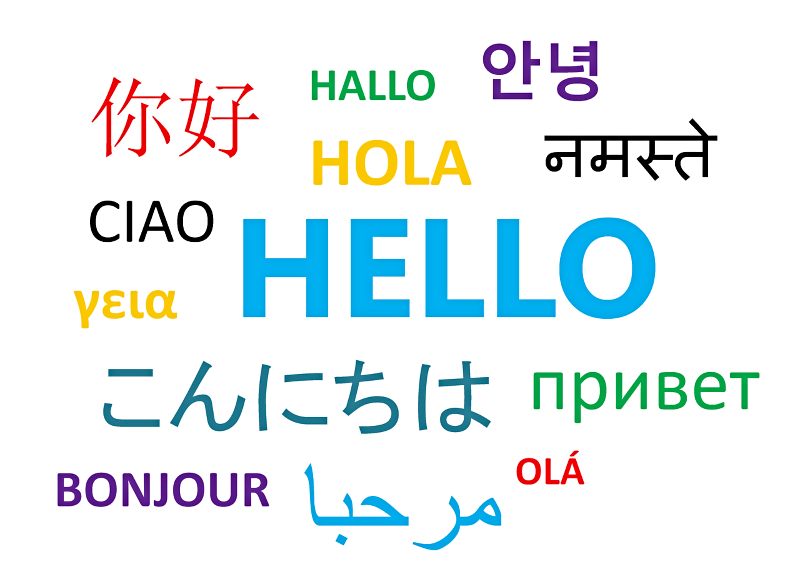
Aaaaaaaand now you know how to say hello in other languages.
OVER TO YOU GUYS! How do you say HELLO in your language? Hello in a different language. Extra brownie points if you can speak several languages… Let me know in the comments.
LEARN THESE OTHER WORDS TOO!
>> Before you go, be sure to check out these other resources on how to say:
MY LOVE in different languages around the world
LIGHT in different languages from the world
GOODBYE in every language of the world
HAPPY BIRTHDAY in many languages
GOOD MORNING in another language
GOOD NIGHT in different languages
BEAUTIFUL in a different language
Cheers,
Rai
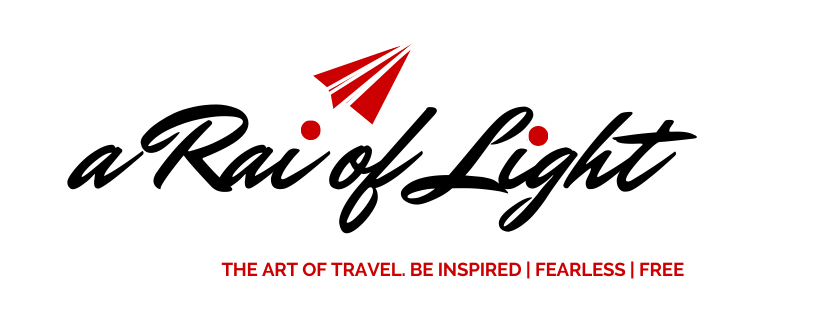
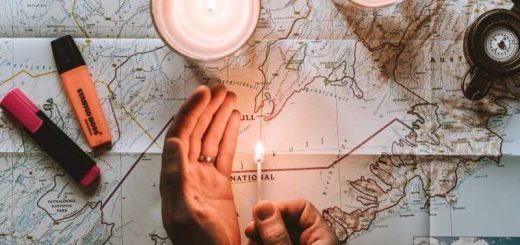
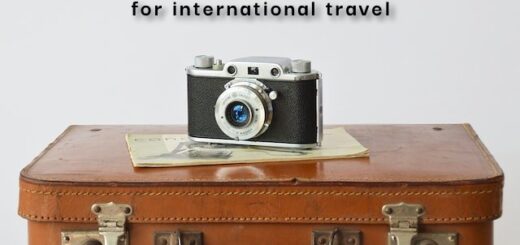

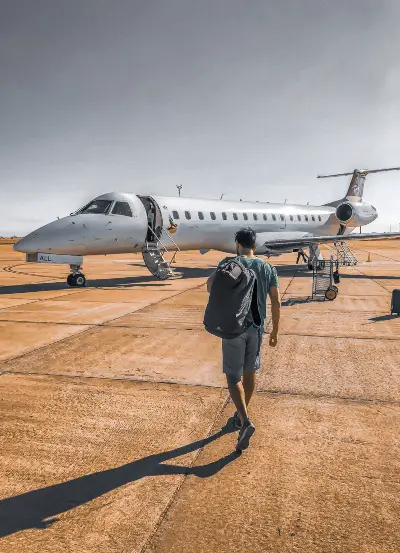 New Here?
New Here? 



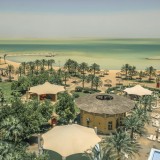

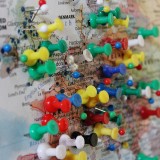


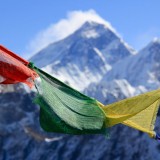



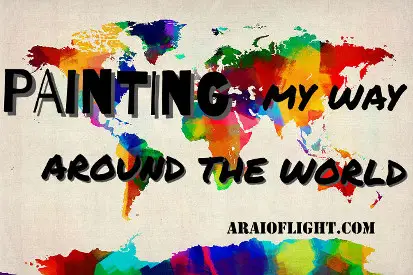
This helped a lot. Thanks for the detailed info – best of its kind on the internet!
You are most welcome!